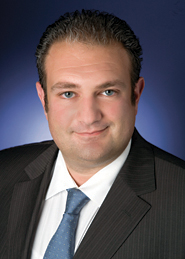In the continuing effort to keep large trades under wraps, Deutsche Bank has introduced a new liquidity-seeking algorithm that aims to use some of the same strategies employed by high-frequency traders.

Based on an earlier Deutsche Bank model and dubbed Stealth, the new algorithm uses high-frequency alpha models to source liquidity in both bright and dark venues. The algorithm adapts to intraday market conditions and attempts to reduce the ability of high-frequency traders to step ahead of large orders.
"We are not attempting to replace high-frequency trading," said Alex Paley, Deutsche Bank’s global head of algorithmic trading product development. "However, this is a very exciting class of models that they are using, and it makes sense to use the same kinds of techniques in order to benefit our customers."
Stealth uses technology Deutsche Bank developed for its Autobahn Equity business and its dark liquidity algorithm SuperX Plus. This new generation of Stealth also contains additional models from the high-frequency field, according to Paley.
"Stealth uses short-term price forecasts to control access to both dark and bright liquidity, as well as dark pool ranking models, to measure which pools have more adverse selection present in them, statistically speaking," Paley said.
The new product offers about a 15 percent improvement in client performance compared to the older version of Stealth, according to Paley. He said so far the reactions from customers have been overwhelmingly positive.
One feature of the product especially attractive to customers is that the algorithm is customizable. This feature helps investors control how much they are willing to give up in alpha in exchange for the speed of a transaction. Paley said there is no such thing as free liquidity, but Stealth can help customers match how much they are willing to pay with how fast they want a transaction completed.
Matthew Simon, a senior analyst for Tabb Group, said Stealth appears to be part of a new breed of algorithms that attempt to provide buyside clients with strategies mimicking the logic of high-frequency traders.
"It’s about taking the high frequency logic that some of their competitors have been using against them and then enabling them to use that same type of tool in the marketplace themselves," Simon said.
In a survey Tabb Group conducted last year, 48 percent of buyside traders listed some element of high-frequency trading as one of the most important issues facing them today.
"High frequency traders are metaphorically compared to piranhas," said Simon. "You don’t want to come to the marketplace with this large block of liquidity, and all of a sudden you have these small nibbles from the high-frequency traders drive up the price."
Though dark pools can offer some protection from high-frequency traders, when volumes are light, liquidity becomes more difficult to find in those pools. Consequently, the public marketplace also becomes more attractive. For that reason, it can be useful to have an algorithm that works for both bright and dark markets, Simon said.



